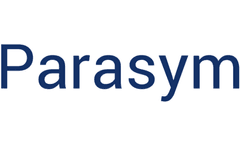Refine by
Innate Immunity Articles & Analysis
31 articles found
This broad proteolytic range allows ELANE to participate in both antimicrobial defense and extracellular matrix degradation, making it a potent and versatile effector of innate immunity. The recombinant form of ELANE protein is typically expressed in eukaryotic systems to preserve post-translational modifications and enzymatic activity. Activity assays, such as ...
Simple Summary The present study investigated possible administration of pectin derived from apple pomace as a beneficial and cost-effective feed additive to be used in trout culture. To achieve the aim, a range of parameters were measured including immune parameters (both at physiological and molecular levels), growth performance and digestive enzyme activity. The results showed promising ...
By cleaving RNA molecules, RNases are integral to numerous biological processes, ranging from RNA maturation to the innate immune response against RNA viruses. In this exploration, we delve into the multifaceted nature of ribonucleases, examining their structure, function, and potential in biotechnology. ...
Adjuvants are substances that are added to vaccines to enhance the body's immune response to the antigen (the protein that triggers an immune response). Adjuvants work by stimulating the innate immune system, which can lead to a stronger and longer-lasting immune response. ...
Structure and Function TREM1 is a cell surface receptor primarily expressed on innate immune cells such as monocytes, macrophages, and neutrophils. Structurally, it belongs to the immunoglobulin superfamily and contains a single extracellular immunoglobulin-like domain, a transmembrane region, and a short cytoplasmic tail. ...
Asthma, affecting over 300 million individuals globally, remains a significant health concern with a high mortality rate. Despite advancements in treatment, many patients still struggle with symptom control and recurrent attacks. While inflammation has been the focal point of asthma research, a recent study sheds light on a mechanical aspect that could refine our understanding and treatment of ...
Adjuvants, also known as immunomodulators or immune enhancers, are an additive to vaccines. Adjuvants are non-specific immune enhancers that enhance or alter the type of immune response to an antigen. ...
These peptides play a crucial role in the innate immune system's defense against microbial infections, exhibiting antimicrobial properties that can inhibit the growth or kill bacteria, fungi, viruses, and even some parasites. ...
Cytokines, including interleukins, tumor necrosis factor, interferons, chemokines, colony-stimulating factors, growth factors, etc., are involved in the activation, proliferation, differentiation and survival of various immune cells. CAR-T cells can regulate immune function, and their combination with cytokines can achieve synergistic effects, which has great ...
It serves as a crucial marker for B cells, playing a pivotal role in the human immune system. While predominantly found on the surface of B cells, CD19 is rarely expressed on other immune cells. ...
Mechanism of Vaccine Adjuvants Vaccine excipients, including adjuvants, are added to vaccine formulations to enhance the immune response by providing necessary signals to the immune system. Adjuvants can stimulate the innate immune system, improving the recognition of antigens and promoting a more robust adaptive ...
IL-17D IL-17D is expressed in many cells and organs, but its expression in immune cells such as lymphocytes and monocytes is weak. IL-17D induces endothelial cells to produce IL-6, IL-8, and GM-CSF. ...
Activation of MAPK leads to transcription of inflammation genes regulated by AP-1 (activator protein-1), while phosphorylation of Ikβ α (a negative regulator of NF-κB) by Ikβ kinase leads to the translocation of NF-κB to the nucleus, aiding in the transcription of key inflammation genes, thus generating numerous inflammatory mediators and mediating inflammatory ...
Deficiencies in the IL-2R alpha and IL-2R gamma subunits disrupt this IL-2-mediated feedback regulation, ultimately leading to the occurrence of autoimmune/inflammatory diseases. IL-2 regulates innate immune cells In humans, monocytes express IL-2R under the stimulation of IFN-γ, but only activated monocytes can bind with IL-2. ...
Pre-clinical in vivo data of the combination of AFM13 with PD1-blockade showed synergism and the potential for induction of cross-talk between innate and adaptive immunity.3 Based on these findings, we conducted a Phase 1b study evaluating the safety and tolerability of AFM13 in combination with pembrolizumab in patients with R/R Hodgkin ...
Disambiguation The process of stimulating the Vagus Nerve with micropulses of electrical current is referred to in a number of different ways. Vagus Nerve Stimulation (VNS) - Typically refers to stimulation of the nerve with a surgically implanted device and electrode. Non-invasive Vagus Nerve Stimulation (tVNS, taVNS, nVNS, LLTS) - Refers to stimulation of the vagus nerve without ...
In contrast, γδ T cells, expressing γδ TCR, are effector cells in the innate immune system, which function in an MHC-unrestricted manner, making them ideal mediators for cancer immunotherapy. ...
These responses are triggered by recognition of damage-associated molecular patterns (DAMPs) and/or pathogen-associated molecular patterns (PAMPs), normally by cells of the innate immune system. DAMPs and PAMPs are acknowledged by sample recognition receptors (PRRs) expressed by innate immune cells; this recognition triggers ...
Thus, tonic interferons modulate gut microbial ecology, which is essential to maintain physiological immune homeostasis and prevent inflammation. Interferon (IFN) is an important mediator of innate and adaptive immunity. ...
Natural killer (NK) cells are a distinct lineage of lymphocytes that mediate cytotoxic activity and secrete cytokines upon immune stimulation. CD94 (Group of Differentiation 94), also known as Killer cell lectin-like receptor subfamily D member 1 (KLRD1), is expressed on the surface of natural killer cells in the innate immune system. ...












